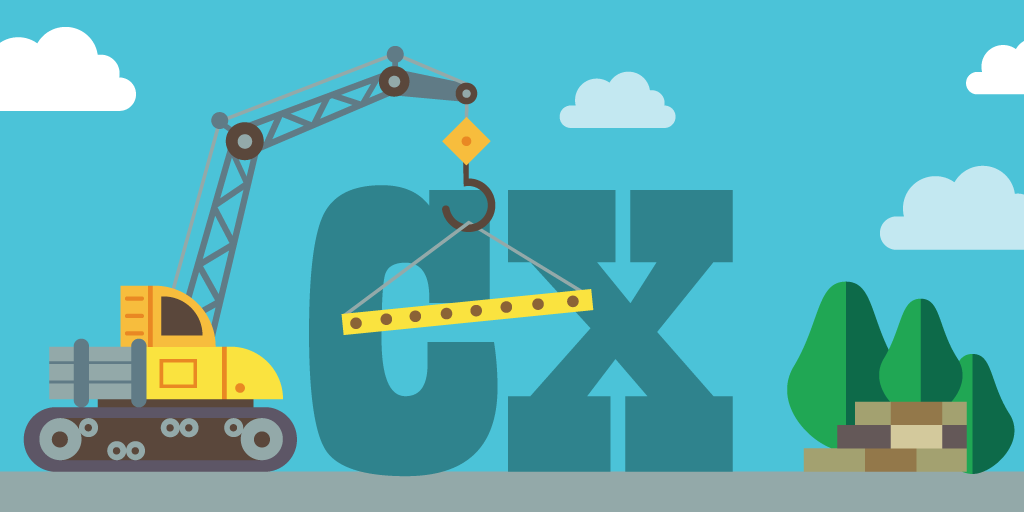Analytics vastly improves a business's customer experience, if the data is put to use. It doesn’t do any good sitting in the cloud.
But how to achieve that, exactly? How can we put data to good use? What kind of things can customer experience data be used to improve? There are no easy answers.
While it’s become the norm to cite data analytics as a game changer for every business, it's rare that we see how that data is practically applied. That’s why in this article, we’re going to lay out how exactly customer experience analytics tools can help your business.
Customer Touchpoints
The name for this segment of our discussion is footfall analytics — at the core of customer experience analytics tools. This is data that tells you about your customer’s feet (and we’re not talking about their shoe size or anything like that).
Footfall analytics tells you where your customer’s feet travel throughout your store. While footfall data doesn’t put you directly in the customer’s head it does offer insights into customer psychology. And those insights are invaluable.
Footfall Analytics: A Complete Picture

What exactly can we learn from footfall analytics?
Tracking how exactly your customers move through the store.
Discovering hiccups, or places where the customer’s journey comes to a halt.
Learning what items are often purchased together.
Normally we only notice customers when they walk in the door and when they leave. There’s this whole middle-segment—the actual act of shopping—that we can’t keep track of without customer experience data.
And if we can’t track the most important of a customer’s journey, how can we improve it?
Discovering Customer Experience Hiccups
Maybe there’s a section in your store that’s largely ignored. An aisle with products that you’re sure your customers would like. But it turns out customers are confused by the store layout and never manage to reach the aisle.
A data-driven customer experience strategy shows businesses how the in-store customer experience affects the bottom line.
With data, managers and business owners recognize the need to reorganize their store’s layout, to label items clearly, to improve the customer’s experience: to make the journey as smooth as possible.
Pairing Items Together
It’s time for a brief story to illustrate our next point. What follows is an anecdotal story about Walmart.
Analysts discovered that on Friday afternoons, some young men shopping at Walmart would purchase diapers, then travel a few aisles across and purchase beer. Diapers and beer.
The idea that shoppers would purchase beer and diapers never occurred to researchers. How could it? What a seemingly odd combination.
Customer experience data reveals items customers frequently purchase together, sometimes in unintuitive combinations.
Now this story is apocryphal. The lesson, however, is very real. Customer experience analytic tools tell you what items customers frequently purchase together.
What do you do with that data?
Well, you might organize your store to move the items closer together. Doing so may even inspire impulse purchasing. If nothing else, it improves the customer’s experience by simplifying their journey.
Personalization of Customer Experience

Here’s a trend that’s become increasingly visible: customers want a personal experience.
It’s the 21st Century. We have more information in our pocket than the cumulative history of all previous civilizations. What does that mean.?
It means customers are very informed. They know what they want and they want what they want. Afterall it’s a simple swipe to look up the latest trends, business reviews etc.
Businesses need to use customer experience analytics tools to ensure customers receive the experience they desire.
A Unique Service
Analytics about particular customers helps businesses foster a service that caters to customers as individuals. That means not only being on a first name basis with customers (which you have because you use a queue management system like Qminder) but giving customers a unique service.
Specialty businesses like salons using customer experience data to look up what treatments their patrons received in the past. That data informs stylists as to what customers might expect that day, or what they can recommend if customers are looking for something new.
In this way, the service becomes more than an exchange of goods — more than a transaction. A business becomes an evolving relationship with customers — all thanks to analytics.
Measuring Success With Service Analytics

Success is more than just a bottom line. While investors and owners may appreciate a large gross for the recent fiscal year, the health of a business is measured by customer satisfaction.
A delivery service with a contract from Amazon may do well one year but quickly find itself out of business the next if customers are consistently posting negative reviews to websites like Yelp.
The point being, analytics tracking customer satisfaction are paramount to gauge the health of a business, to know that your business’ strategy is working.
That means engaging customer directly to collect customer experience data. A data-driven customer experience means asking questions like:
“Did our service today meet your expectations?”
“What can we do to improve our business to better serve you in the future?”
“Were you able to easily find what you were looking for?”
Smart businesses reach out to customers and communicate with them to collect testimonial data. They want to know not just what they’re doing wrong, but what they’re doing right.
And nowadays, there is no end to mediums to communicate satisfaction or dissatisfaction, whether it be a company’s Facebook page, surveys, or a third-party review site. Or better yet, a combination of all three.
Empowering Staff
Information is empowering. With the right knowledge employees can best serve customers, ensuring their needs are met.
Unfortunately, between 65% and 75% of companies overwhelm their employees. They fail to empower their employees, to give them the tools they need to succeed.
But with proper customer experience analytics tools, individual employees are given the right resources to best serve customers. Employees don’t need to run off to a manager to find out if “X” is in stock. Being connected to the stream of data, they can easily discover that information for themselves.
Remember, customers don't want to sift through a business’ bureaucracy, and neither do employees.
Performance Tracking

Customer experience analytics tools don’t just track customers — they track employees as well. Remember, your employees are the embodiment of your business’ culture.
Employees directly interact with customers, forming a major part of your store’s customer experience impression. Analytics tracks employees and how well they’re performing their tasks.
Always take the time to at least thank employees who excel, and reward them for performing well. Collected data will also reveal which employees are underperforming: those that need an extra helping hand.
Big Data for Big Business Results
Analytics collected over time is used to vastly improve customer experience. Yes, we’re talking Big Data. All that “big” means is that it's a lot of data collected over time.
Large enough data sets give an informed picture of a business’ success. Maybe one month your business is great and the next it slumps, or vice-versa. The data prompts the question, “What happened?”
Without analytics, it may not be obvious that something has changed. But data over time can be used to track variables, changes in strategy, or maybe just a holiday season, that can be correlated to a change in success.
At the same time, businesses with multiple storefronts can use data to compare and contrast retail locations. What works at one store may not work at another. Or, perhaps a location has proven less than optimal.
The point is large amounts of customer experience data helps business owners ask the right questions, to create a strategy that works for them to create an excellent customer experience.
Customer experience analytics tools provide powerful information that can vastly improve your business. At the core of these practical tools is a desire to understand customers, to better serve their needs. It’s a principle at the heart of many successful businesses.
You too can foster a data-driven customer experience by using a queue management tool like Qminder. Qminder is free to try for 2 weeks, no credit card required. Give Qminder a whirl and discover how big data improves the customer experience.






